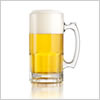Your cart
 Brazil: Beverage sector invests heavily in modernization in recent years
Brazil: Beverage sector invests heavily in modernization in recent years
Brazil’s beverage sector has invested billions in recent years to modernize its factories, betting not only on expanding capacity but also on plant flexibility to respond to shifting consumer demand, particularly the rapid growth of premium beer segments. Economically, however, the industry continues to struggle, Valor International reported on July 17.
The country’s three largest brewers—Ambev, Heineken, and Grupo Petrópolis—have invested more than R$17.5 billion since 2020, with the bulk of that total concentrated in the past three years. The investments include new plants, such as Heineken’s in Minas Gerais and Ambev’s in Paraná, as well as the expansion and modernization of existing facilities.
These moves come amid a complex beer market. On one end, premium brands are booming, sometimes even outpacing production capacity. On the other hand, demand for mainstream brands has stagnated, as Brazilian consumers feel the pinch of tighter budgets.
According to Euromonitor, Brazil’s beer market is expected to reach 14.914 billion liters in 2024, up just 1% from the previous year.
But it’s not total volume that presents the biggest growth opportunity. The standout category in 2024 has been low- and non-alcoholic beers, which surged 18% from 2023, reaching 702 million liters.
Premium lagers also saw a 4% increase in volume last year and double-digit value growth, according to data compiled by the National Beer Industry Association (SINDICERV).
Ambev’s vice president of supply, Valdecir Duarte, noted that the company has invested more than R$10 billion over the past three years to expand and modernize operations across Brazil. This includes R$400 million directed to plants in the Northeast—Maranhão, Bahia, Piauí, Pernambuco, Ceará, and Sergipe—to boost output of premium brands like Corona, Spaten, and Stella, as well as zero-alcohol beers like Budweiser Zero.
“In 2025, we’re launching a new premium production line in Goiás, focused on returnable glass bottles, with capacity for 60,000 bottles per hour,” he said.
Minas Gerais has also played a key role, receiving new bottling lines for returnables and cans. “Since 2020, we’ve produced over 15 billion cans annually in our vertically integrated operation in Minas Gerais,” Mr. Duarte added.
The company is also building a new glass production facility in Paraná to support its premium strategy, with a projected investment of R$870 million.
Asked about broader industry challenges, Mr. Duarte said Ambev’s core brands have performed in line with or better than the market. “In Brazil, brands like Brahma and Antarctica have posted mid-single-digit volume growth. Our investments have played an important role in these results, and we believe there’s still room for beer to grow. Core brands will remain resilient and strategically relevant,” he said.
Skol, one of the group’s flagship brands, has faced declining sales, a trend Ambev acknowledges as a concern.
Heineken has also expanded its footprint in Brazil. Its most recent move is a new R$2.5 billion plant in Passos (Minas Gerais)—the group’s largest investment in the country to date. The company has also expanded facilities in Igarassu (Pernambuco), Alagoinhas (Bahia), Ponta Grossa (Paraná), and Araraquara (São Paulo), and modernized units in Araraquara, Jacareí, and Itu, all in São Paulo state.
“These projects were designed to boost production capacity, especially for premium and mainstream brands,” said Anderson Belo, Heineken’s director of engineering projects. In total, the group invested R$6.29 billion in capacity expansion and sustainability upgrades. “Thanks to these investments, we’ve nearly tripled Heineken’s production capacity,” Mr. Belo noted.
Despite challenges in the value segment, Mr. Belo said the company remains focused on shifting consumer behavior. “Our diverse portfolio allows us to serve a range of consumer profiles and regional realities, including the economy segment, which remains relevant. We prioritize flexibility in our investments, so we can adapt quickly to market shifts—whether that means scaling premium brands or maintaining capacity for value lines,” he said.
Heineken is reportedly planning to raise prices by 6%, the first increase since April 2023, according to O Globo columnist Lauro Jardim.
Grupo Petrópolis, which owns Itaipava, also sees opportunities in the Brazilian market. In 2020, the company completed a R$1.2 billion investment to open its largest brewery in Uberaba (Minas Gerais), its eighth in the country. The facility has an annual capacity of 11.4 million hectoliters.
In a statement, the group said market projections indicate modest volume growth in 2025, and that its existing installed capacity is sufficient to meet rising demand, eliminating the need for new production lines.
According to sources, the company is currently operating with significant idle capacity, largely due to the Uberaba plant coming online. As a result, Petrópolis has shifted its focus to other product categories, such as energy drinks and RTDs (ready-to-drink beverages).
The group, which also has operations in real estate and logistics, filed for bankruptcy protection in 2023. Analysts say weakening beer sales and intense competition from Ambev and Heineken have fueled the crisis in its core business.
At the start of the year, Petrópolis secured a R$328 million DIP (debtor-in-possession) financing package from Banco Original, owned by J&F Participações, as previously reported by Valor. The funds are intended to support ongoing operations and help purchase inputs for its beer division.
SINDICERV President Márcio Maciel said the industry remains optimistic about growth in Brazil. “The rise of zero-alcohol beer reinforces our commitment to consumer choice and a more balanced, conscious approach to alcohol consumption,” he said.
Zurück






